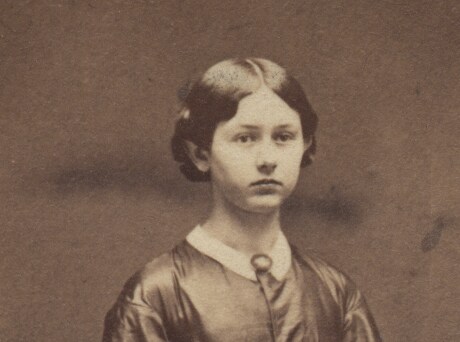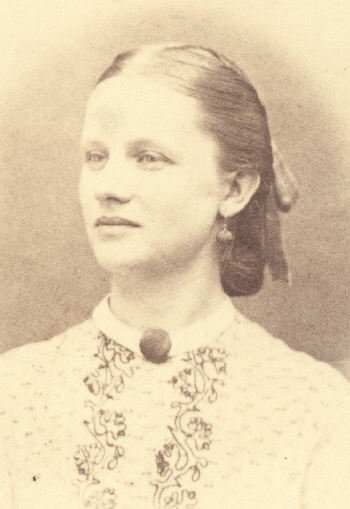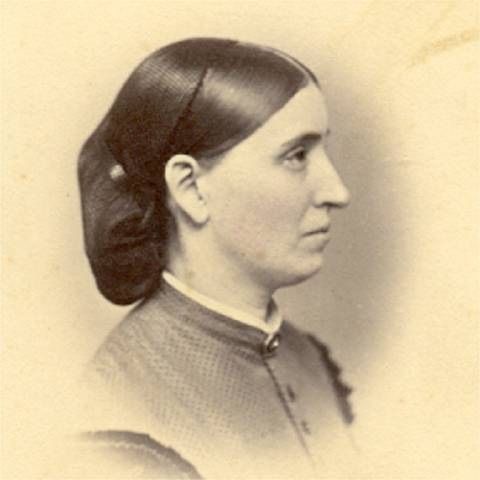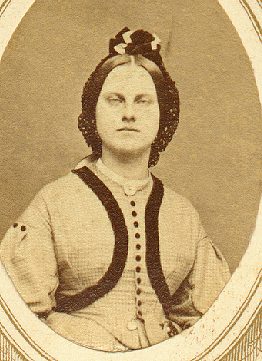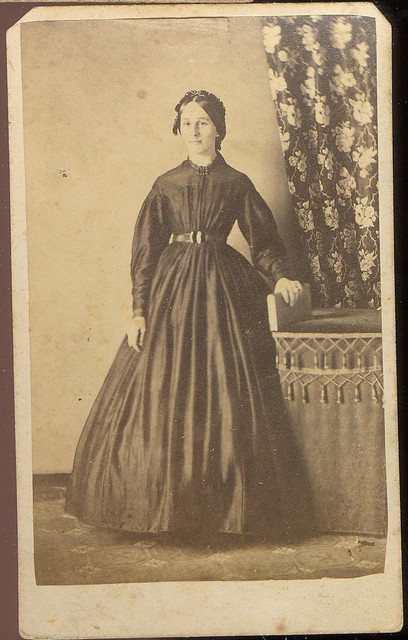White Collars: The overwhelming majority of women during the period wore white collars with their dresses. These were not only decorative, but highly functional as well. Collars served to protect the dress from the dirt and oils of the body. They were removable which meant that they could be easily washed of the dirt and oils they picked up. When one thinks of the laundering practices of the 1860s, one can easily see why a woman would rather wash a few collars than a few dresses! Collars were often basted or pinned into a dress, and could be switched out between dresses.
Collars of the 1860s come in generally two styles: a “jewel” collar that lays flat around the neck, and a stand up collar that stands up from the neckline of the dress. Stand up collars sometimes had an "outer" collar made of the dress fabric. This was a permanent feature of the dress, but was still always worn with a white collar underneath. Collars tend to be front opening, following the front opening of the dress.
Outer collar of dress fabric with inner white collar.
White stand up collar.
Jewel collar with fancy edge.
There are only a few exceptions where collars were NOT worn: with some sheer summer dresses and with wide-necked dresses like ball gowns or children’s dresses. The only time colored collars seem to be worn was during deep mourning, when a black crepe collar would have been chosen. There is little evidence suggesting collars were ever of the same fabric as the dress.
Collars are very easy to make. If your dress pattern does not include a collar pattern, Kay Gnagey has relatively inexpensive patterns to make them:
http://shop.originals-by-kay.com/product.sc?productId=17&categoryId=34
http://shop.originals-by-kay.com/product.sc?productId=139&categoryId=34
